Tutorial durations vary but are typically between 1-2 hours. For the date and start time of each tutorial, please refer to the conference program at a glance.
TUT-1, 5G Network Performance: Key Considerations & Open Challenges
Session chair: Alireza Ghasempour
Abstract: The success of 5G technology lies essentially in its ability to meet the stringent performance requirements of high-bandwidth and low latency applications. Large scale adoption of eMBB, mMTC and uRLLC use cases viz., extreme reality, industrial IoT(IIoT), haptic control and self- driven cars requires rapid deployment efforts. This tutorial discusses the key aspects affecting performance of 5G access and core networks including space, time, frequency, architectural and skill development paradigms. Firstly, the access network performance considerations in spatial, temporal and frequency domains are discussed. Approaches for modelling and analysis of 5G wireless channels and access network traffic are explored. Secondly, core network orchestration challenges are discussed with special relevance to QoS. Multi-access edge computing (MEC), network slicing, software defined networking (SDN) and network function virtualization (NFV) essential to ensure low latency are presented. Thirdly, demands for 5G training to lift the skill set of current engineers, particularly in the areas of operational technology (OT) and IIoT, covering the skills gap and availability of focussed relevant training at a professional engineers level are discussed. Some of the open challenges that need to be addressed to deliver the 5G promise are deliberated.
Short Biography of the Speakers:
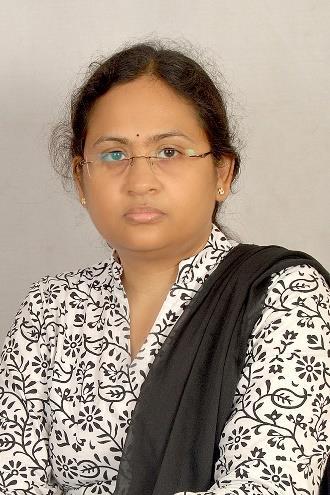 Dr. Vijayalakshmi Chetlapalli
Dr. Vijayalakshmi Chetlapalli
Dr. Vijayalakshmi Chetlapalli received Ph.D from Symbiosis International (Deemed University), India in 2020. Her doctoral thesis was on stochastic modelling of wireless network performance. She received M.S (by Research) in electrical engineering from I.I.T Madras, India in 1998 and B.Tech in Electronics & Telecommunications Engineering from J.N.T.U Hyderabad, India in 1994. From 1998 to 2000 she worked as Senior Project Officer, Department of Electrical Engineering, I.I.T Madras, on RF propagation modelling, and the effect of radio interference on the capacity of Wireless Local Loop systems. During the period 2000 – 2010, she worked with Midas Communication Technologies, Sasken Communications and TechMahindra, India. Her work in this period included mobile network testing, wireless protocol stacks, smart antenna systems and base station scheduling algorithms for LTE networks. From 2012 to 2019, she was faculty at Symbiosis Institute of Telecom Management, Pune, India. She reviews for IEEE IoT Journal, IEEE Access and IEEE conferences. Her research interests include performance modelling and simulation of wireless networks, stochastic processes, radio propagation modelling.
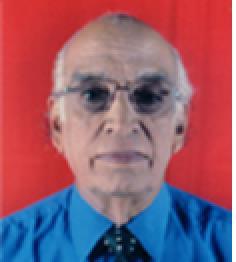 Dr. Krishna Siva Subramonia Iyer
Dr. Krishna Siva Subramonia Iyer
Dr. Krishna Siva Subramonia Iyer received Ph. D. in Mathematics from I.I.T Madras in 1964. His doctoral thesis was on application of stochastic processes to problems in Physics and Biology. He served as faculty in the department of Mathematics, I.I.T Madras from 1960 to 1967. He joined Defence Research and Development Organization, India in 1967 and held several responsibilities in teaching and research until his retirement in 1996. His pioneering research on estimation of size of cancer tumor using Random Point Process techniques has received wide acceptance and appreciation from oncologists world over, and also won him recognition as one of the International WHO’s top 500 scientists for 1997. From 2002 to 2012, he was associated with International Institute of Information Technology, Pune, India. From October 2012- November 2018, he was with Symbiosis Institute of Telecom Management, Symbiosis International (Deemed University) as Honorary Adjunct Professor. Dr. K.S.S Iyer’s teaching and research experience spans 56 years and includes Queuing Theory, Cancer Modelling, Performance evaluation of Communication Networks, Advanced Mathematics, Operations Research, Business Statistics and Modeling and Simulation.
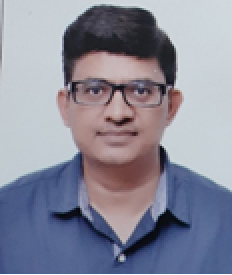 Dr. Himanshu Agrawal
Dr. Himanshu Agrawal
Himanshu Agrawal obtained PhD from RMIT University, Australia in 2010 and M. Tech and B. E. from School of Electronics, DAVV, Indore (2003), Govt. Engineering College, Ujjain (1994) respectively. His professional career spans over 25 years in Industry and academia. He worked as an Associate Professor with Symbiosis Institute of Technology, Symbiosis International (Deemed University) India. He also worked as Visiting Associate Professor, IoT Lab Swinburne during 2019-2020. Since August 2020, he is working as an academic researcher at Curtin Cisco Centre for Networks, EECMS Curtin University Australia. He has published over 55 research articles in peer-review journals and reputed international conferences. His research interests include Internet routing, Autonomous Networks, SDN, 5G, Edge Computing, IoT security, Privacy issues in IoT, and Lightweight cryptography.
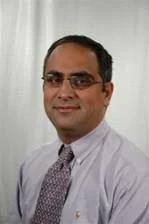 Profesor Reza Nejabati
Profesor Reza Nejabati
Profesor Reza Nejabati obtained B.Sc(Tehran) and M.Sc & PhD from University of Essex, U.K. He is currently a chair professor of intelligent networks and head of the High-Performance Network Group in the Department of Electrical and Electronic Engineering in the University of Bristol, UK. He is also a visiting professor and Cisco chair in the Cisco center for Intent Based Networking in the Curtin University, Australia. He has established successful and internationally recognized research activities in “Autonomous and Intent Based Networks,” as well as “Quantum Networks.”His research received the prestigious IEEE Charles Kao Award in 2016 and has done important contributions in 5G, Smart City, Quantum Communication, and Future Internet Experimentation. Building on his research, he co-founded a successful start-up company (Zeetta Networks Ltd). It has currently 25 employees and £6m VC and external funding.
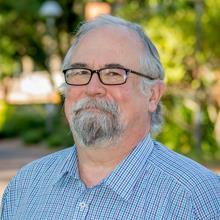 Professor Iain Murray
Professor Iain Murray
Professor Iain Murray is a Professor in the School of Electrical Engineering, Computing and Mathematical Sciences at Curtin University, specialising in networking, embedded systems and assistive technology. He received his B.Eng. (Hons) and Ph.D. in Computer Systems Engineering from Curtin in 1998, and 2008, respectively. He is a Curtin Academy Fellow and was appointed a Member of the Order of Australia for his contributions to education in 2016.
TUT-2, Authentication and Key Agreements in 2G, 3G, 4G, and 5G
Session chair: Amruthur Narasimhan
Abstract: Authentication and Key Agreement (AKA) is a type of security protocol, used in 3GPP mobile networks, that provides two security capabilities. The first capability, called authentication, is to cryptographically assert that a mobile phone or a network is indeed who it claims to be, and the second capability, called key agreement, is to put necessary cryptographic keys in place for protection of traffic between the mobile phone and the network. Jointly, these two capabilities lay the foundation of secure 3GPP mobile networks. From 2G-5G, there are eight main versions of AKA, details of which are spread over and embedded deep in multiple technical specifications. It is getting increasingly difficult to quickly check a certain property of a certain AKA, let alone grasp the full picture of all AKAs. In this tutorial, we summarize main properties of all eight AKAs and provide pictorial “cheatsheets” which will serve as concise references. We hope these will benefit university students, security researchers, and 3GPP standardization community.
Short Biography of the Speaker:
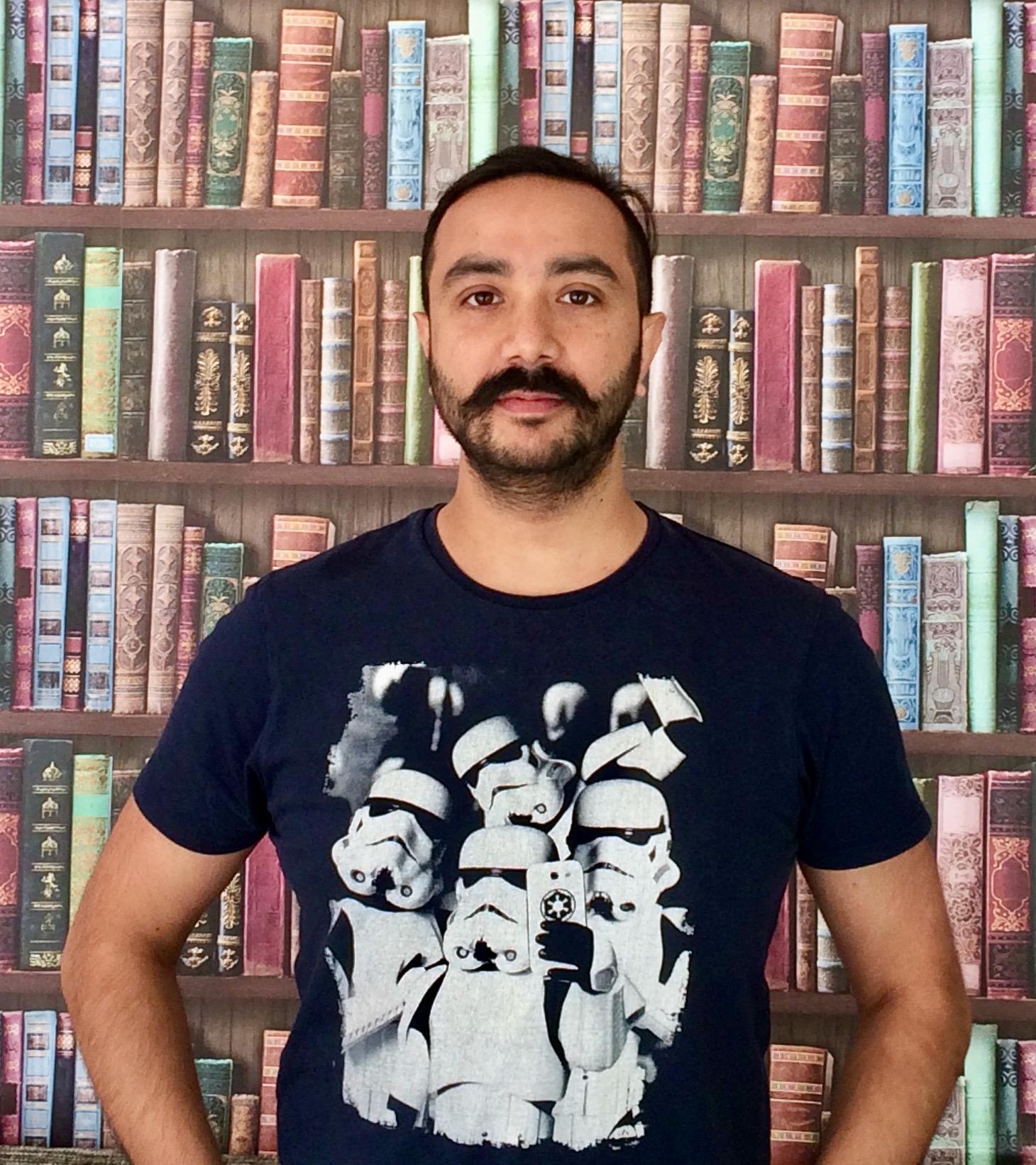 Prajwol Kumar Nakarmi
Prajwol Kumar Nakarmi
Prajwol Kumar Nakarmi is a Senior Specialist in RAN Security and an inventor at Ericsson, Stockholm. Since joining Ericsson in 2011, he has worked on 4G/5G security standardization in 3GPP, European 5G ENSURE project, privacy-enhancing mechanisms, security architectures, using AI to improve security, and air interface fuzzing. He has shaped 5G security with important contributions in topics like SUPI encryption, user plane security, authentication, and AS key management. He provides standardization expertise to Ericsson’s PSIRT and occasionally contributes to GSMA and ATIS. He has written many materials on mobile network security including academic papers, white papers, and blog posts. Since 2020, he is representing Ericsson in GSMA’s CVD Panel of Experts. Prajwol received the M.Sc.(tech.) degree in security and mobile computing jointly from Royal Institute of Technology (KTH) in Stockholm, Sweden and Aalto University in Espoo, Finland in 2011. He was a recipient of Erasmus Mundus NordSecMob scholarship, 2009-2011.
TUT-3, Homomorphic encryption over 5G networks
Session chair: Amruthur Narasimhan
Abstract: A large number of user applications involving 5G data are hosted on the cloud today to cater for various business models. For example, the data captured from sensors mounted over manufacturing equipment get streamed over 5G and processed by AI algorithms in the cloud These applications require the data to be provided during run time for processing. However, it poses security and privacy issues. One of the solutions for the secure data transfer is homomorphic encryption. It supports the consumption of the cloud APIs without the decryption of the data. However, it requires huge computation power. To reduce the same, a relevance based hierarchical homomorphic encryption would be introduced in the tutorial. It allows the creation of multiple slices to process the fragments of the data with different levels of security. For the future applications over 5G, the required large computation power for Homomorphic encryption may be provided by Quantum computers. In addition, the SDN can receive already encrypted (homomorphic) data and encrypt it further so that the contained data does not deteriorate. It is more significant for Quantum Homomorphic encryption.
Short Biography of the Speaker:
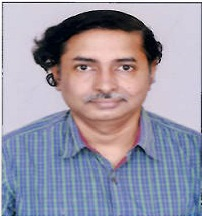
Dr. Manjunath Ramachandra
Dr. Manjunath Ramachandra is working at CTO office of Wipro Limited, Bangalore as Principal consultant. He has filed about 90 patents, conducted 24 tutorials, and delivered 33 keynotes, authored 208 papers and a book. He was a key member in the TDLS task force of Wi-Fi Alliance, served as the editor for the regional profiles standard in Digital living network alliance (DLNA) and as the industrial liaison officer for the CE-Linux Forum. He has chaired several international conferences and workshops.
TUT-4, Blockchain, IoT and 5G – The Trio to Mitigate Current and Post COVID-19 Challenges
Session chair: Amruthur Narasimhan
Abstract: Today, the world is undergoing an unprecedented situation due to the dreadful spread of Coronavirus Disease 2019 (COVID-19), which has been announced as a pandemic by the World Health Organization (WHO) on March 11, 2020. To prevent the spread of COVID-19 severe measures have been taken by countries around the globe, including complete lockdown, social distancing, barring movements, proactive testing, restriction of social gathering, among others. Such measures have adversely affected our lifestyle, work, governance, and the overall economy. Nevertheless, we are able to pull on and have been fighting against COVID-19, thanks to the miraculous intervening of technologies. In the last couple of months, we have witnessed that technologies, if properly integrated, fine-tuned, and used appropriately, can indeed help restore and realign our world during (and post) the COVID-19 era. In this direction, the integrated role of three technologies, i.e., Blockchain, IoT, and 5G, turns out to be very promising. Thus, the tutorial will elaborate on the multifarious role of the blockchain-enabled 5G-IoT ecosystem, the key technical aspects, numerous use cases (healthcare, automated surveillance, contactless delivery, manufacturing, supply chain management), and technical challenges that need attention by the research community. The tutorial will also feature a demonstration on blockchain, which will provide an opportunity for the attendees to gain some practical exposure.
Short Biography of the Speakers:
 Dr. Anshuman Kalla
Dr. Anshuman Kalla
Dr. Anshuman Kalla is working as Postdoctoral Visiting Researcher at the Centre for Wireless Communications (CWC), University of Oulu, Finland. Dr. Kalla has more than ten years of teaching and research experience. He graduated as Engineer from Govt. Engineering College Bikaner in 2004. He did Master of Science in Telecommunications and Wireless Networking from ISEP, Paris, France, in 2008 and another Master from University of Nice Sophia Antipolis, France, in 2011. He obtained Ph.D. degree in 2017. Dr. Kalla was a recipient of Master’s scholarships from the Government of France to pursue both Master programs. Dr. Kalla has delivered invited sessions and talks during various Short-Term Courses, Faculty Development Programs, Workshops, and Conferences. He has also delivered tutorials and workshop at IEEE 5GWF 2020, IEEE ANTS 2020, and IEEE ANTS 2019. His area of interest includes Blockchain, Internet of Things (IoT), Information Centric Networking (ICN), Software Defined Networking (SDN), 5G and 6G. More info: https://sites.google.com/site/kallanshuman/
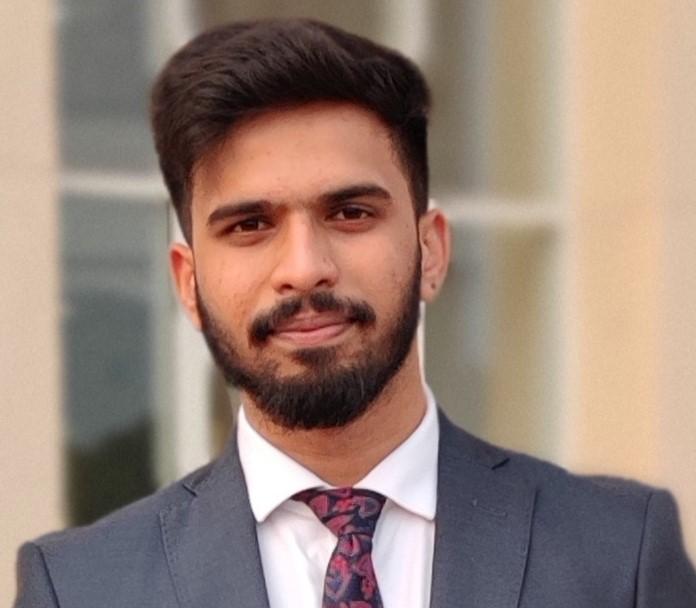 Raaj Anand Mishra
Raaj Anand Mishra
Raaj Anand Mishra is a software engineer at Dell Technologies. He finished his B.Tech at the Department of Computer and Communication Engineering, School of Computing and Information Technology, Manipal University Jaipur, India, in 2020. Raaj has experience in fullstack web development, mobile application development, and blockchain-based decentralized application (DApp) development. Raaj has successfully completed three internships: First, at Decoders Co, Delhi, India in 2018, during which he worked with technologies like React JS, Express, Node, WordPress, and MongoDB; Second at Stickman Services, Vadodara, India in 2019 and worked on WordPress; Third, at Dell EMC, Bengaluru, India in 2019 where he dealt with the technologies like React JS, AngularJS, SpringBoot, Express, Android Studio, Node, PostgreSQL and Pivotal Cloud Foundry. He has also worked on two Blockchain-based projects using Ethereum, ReactJS & smart contracts and has published papers at IEEE CCNC 2020 and IEEE 5G World Forum 2020. He also conducted a workshop on “Blockchain for Cyber-Physical Systems and IoT” at ANTS 2019, BITS Pilani, Goa.
 Dr. Madhusanka Liyanage
Dr. Madhusanka Liyanage
Dr. Madhusanka Liyanage received his B.Sc. degree (First Class Honours) in electronics and telecommunication engineering from the University of Moratuwa, Moratuwa, Sri Lanka, in 2009, the M.Eng. degree from the Asian Institute of Technology, Bangkok, Thailand, in 2011, the M.Sc. degree from the University of Nice Sophia Antipolis, Nice, France, in 2011, and the Doctor of Technology degree in communication engineering from the University of Oulu, Oulu, Finland, in 2016. From 2011 to 2012, he worked as a Research Scientist at the I3S Laboratory and Inria, Sophia Antipolis, France. He is currently an assistant professor/Ad Astra Fellow at the School of Computer Science, University College Dublin, Ireland. He is also acting as an adjunct Professor at the Center for Wireless Communications, University of Oulu, Finland. He was also a recipient of the prestigious Marie Skłodowska-Curie Actions Individual Fellowship during 2018-2020. During 2015-2018, he has been a Visiting Research Fellow at the CSIRO, Australia, the Infolabs21, Lancaster University, U.K., Computer Science and Engineering, The University of New South Wales, Australia, School of IT, University of Sydney, Australia, LIP6, Sorbonne University, France and Computer Science and Engineering, The University of Oxford, U.K. He is also a senior member of IEEE. In 2020, he received the “2020 IEEE ComSoc Outstanding Young Researcher” award by IEEE ComSoc EMEA. Dr. Liyanage’s research interests are 5G/6G, SDN, IoT, Blockchain, MEC, mobile, and virtual network security. More info: www.madhusanka.com
TUT-5, Reconfigurable Intelligent Surfaces for Future Wireless Communications
Session chair: Alireza Ghasempour
Abstract: As 5G networks take their final form, connectivity demands continue to increase exponentially and new services pose more constraints on the performance that end-users expect. A recent technological breakthrough that holds the potential to meet these demands is that of reconfigurable intelligent surfaces. We believe that a tutorial on the principles and latest approaches of reconfigurable intelligent surfaces for beyond 5G wireless communications will be of great value for both academics and industry practitioners.
Short Biography of the Speakers:
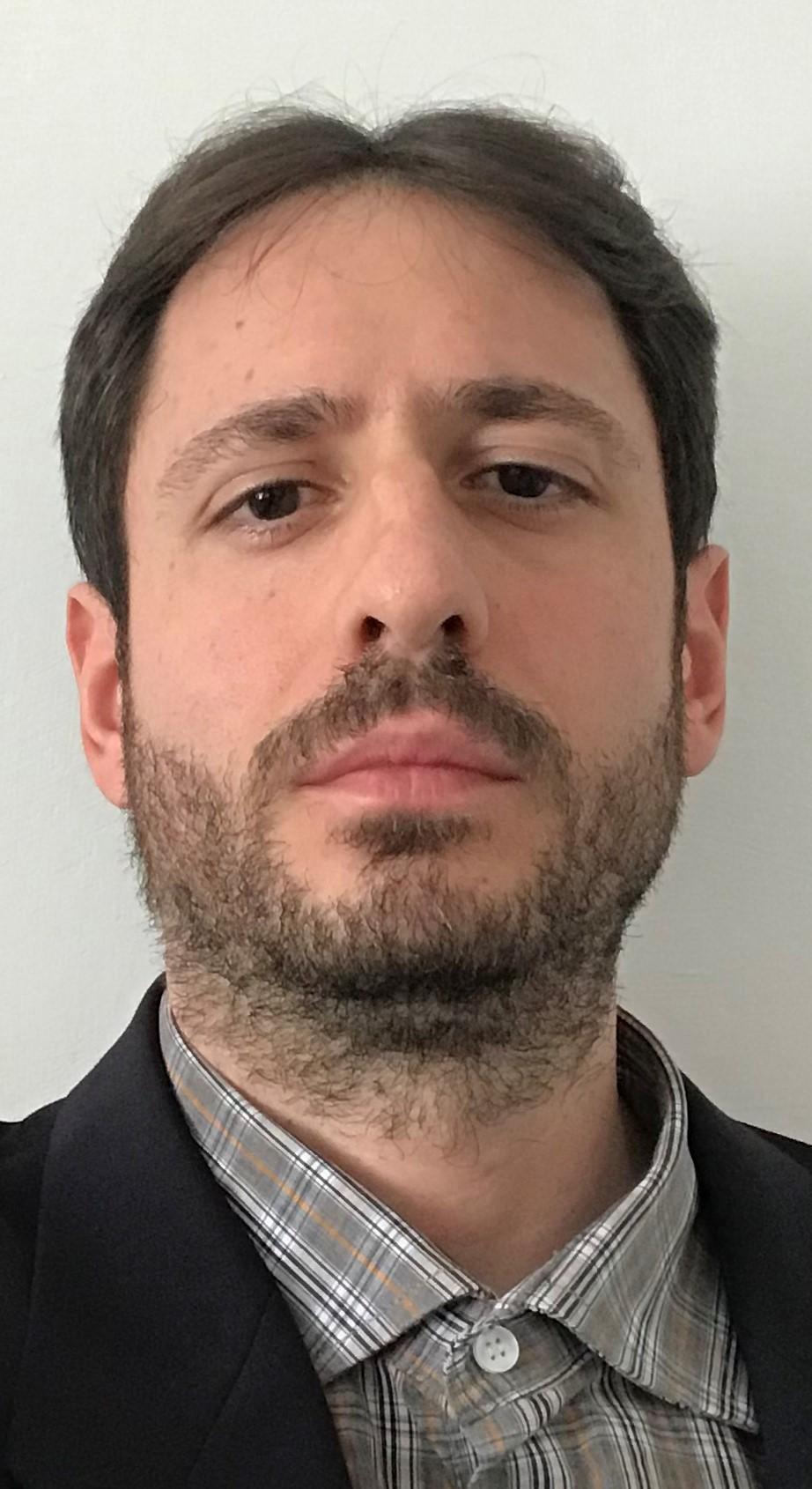 Dr. Alessio Zappone
Dr. Alessio Zappone
Dr. Alessio Zappone (SM’16) received his M.Sc. and Ph.D. both from the University of Cassino and Southern Lazio (Cassino, Italy). In 2012 he has worked with the Consorzio Nazionale Interuniversitario per le Telecomunicazioni (CNIT) in the framework of the FP7 EU-funded project TREND. From 2012 to 2016 he has been with the Dresden University of Technology, managing the project CEMRIN on energy-efficient resource allocation in wireless networks, funded by the German research foundation (DFG). In 2017 he was the recipient of the H2020 Marie Curie IF BESMART fellowship for experienced researchers, carried out at the LANEAS group of CentraleSupelec (Gif-sur-Yvette, France). Since 2019, he is a tenured professor at the University of Cassino and Southern Lazio. His research interests lie in the area of communication theory and signal processing, with main focus on optimization techniques for resource allocation and energy efficiency maximization. He held several research appointments at international institutions. He was appointed exemplary reviewer for the IEEE Transactions on Communications in 2016 and for the IEEE Transactions on Wireless Communications in 2017 and 2018. Alessio serves as senior area editor for the IEEE Signal Processing Letters and has served as guest editor for the IEEE Journal on Selected Areas on Communications (Special Issues on Energy-Efficient Techniques for 5G Wireless Communication Systems and on Wireless Networks Empowered by Reconfigurable Intelligent Surfaces).
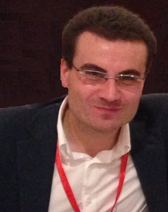 Dr. Marco Di Renzo
Dr. Marco Di Renzo
Dr. Marco Di Renzo (Fellow, IEEE) received the Laurea (cum laude) and Ph.D. degrees in electrical engineering from the University of L’Aquila, Italy, in 2003 and 2007, respectively, and the Habilitation à Diriger des Recherches (Doctor of Science) degree from University Paris-Sud (now Paris-Saclay University), France, in 2013. Since 2010, he has been with the French National Center for Scientific Research (CNRS), where he is a CNRS Research Director (CNRS Professor) with the Laboratory of Signals and Systems (L2S) of Paris-Saclay University – CNRS and CentraleSupelec, Paris, France. In Paris-Saclay University, he serves as the Coordinator of the Communications and Networks Research Area of the Laboratory of Excellence DigiCosme, and as a Member of the Admission and Evaluation Committee of the Ph.D. School on Information and Communication Technologies. He is the Editor-in-Chief of IEEE Communications Letters and a Distinguished Speaker of the IEEE Vehicular Technology Society. In 2017-2020, he was a Distinguished Lecturer of the IEEE Vehicular Technology Society and IEEE Communications Society. He has received several research distinctions, which include the SEE-IEEE Alain Glavieux Award, the IEEE Jack Neubauer Memorial Best Systems Paper Award, the Royal Academy of Engineering Distinguished Visiting Fellowship, the Nokia Foundation Visiting Professorship, the Fulbright Fellowship, and the 2021 EURASIP Journal on Wireless Communications and Networking Best Paper Award. He is a Fellow of the UK Institution of Engineering and Technology (IET), an Ordinary Member of the European Academy of Sciences and Arts (EASA), and an Ordinary Member of the Academia Europaea (AE). Also, he is a Highly Cited Researcher (2019).
TUT-6, Voice services in 5G – Deployment options and strategies
Session chair: Alireza Ghasempour
Abstract: Voice calls or voice services are inherent to mobile networks and are a fundamental requirement. In 5G, we expect more use-cases around voice services and enhanced quality and user experience. While enterprises move to dedicated private 5G networks, they must shift to 5G voice services and leave behind legacy voice implementations. This tutorial briefly introduces 5G voice service (Voice over New Radio – VoNR) and then explains migration strategies for voice services to 5G from previous generation architectures. Next, we present deployment options for 5G voice in Non-Stand-Alone (NSA) and Stand-Alone(SA) and move to 5G voice use-cases for enterprises and how they benefit from this shift. We then review emergency voice call handling in 5G networks and evolving use-cases around voice. We will also be presenting a future architecture of voice services in 5G.
Short Biography of the Speakers:
 Rajaneesh Suhakar Shetty
Rajaneesh Suhakar Shetty
Rajaneesh Suhakar Shetty is a Principal Architect at Cisco working as a Service provider Solution Specialist for many 5G Designs/deployments projects for large customer across regions. Rajaneesh has 20+ years of telecom industry experience with proven credentials as Trusted Advisory with expertise in Customer delivery, Software Management, System Architecture, Test Architecture, Product Management and Pre-sales for 4G, 5G, VoLTE, RAN and other Telecom solutions using state-of-the-art technologies with excellent track record of Technical leadership & management. Rajaneesh holds several patents in mobile technologies and is an author of a published book – “5G Mobile Core Network: Design, Deployment, Automation”, and “4G: Deployment Strategies and Operational Implications”.
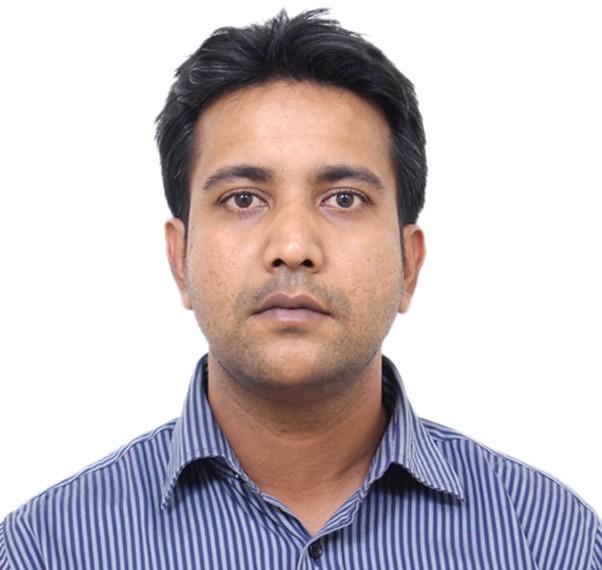 Vivek Agarwal
Vivek Agarwal
Vivek Agarwal is a Senior Technical leader at Cisco and leads Cisco’s 5G service and technology transformation group . Vivek has 15+ year industry experience working with Tier1 mobile operators globally . Vivek’s expertise includes large scale deployment of 4G, 5G, VNF infrastructure, VoWiFi, VoLTE. Vivek holds special expertise in deployment for network functional virtualization infrastructure deployment for large scale datacenter customers globally . Vivek holds several patents in mobile technologies and NFV space. Vivek is industry speaker on different technologies at MWC ,Cisco live etc.
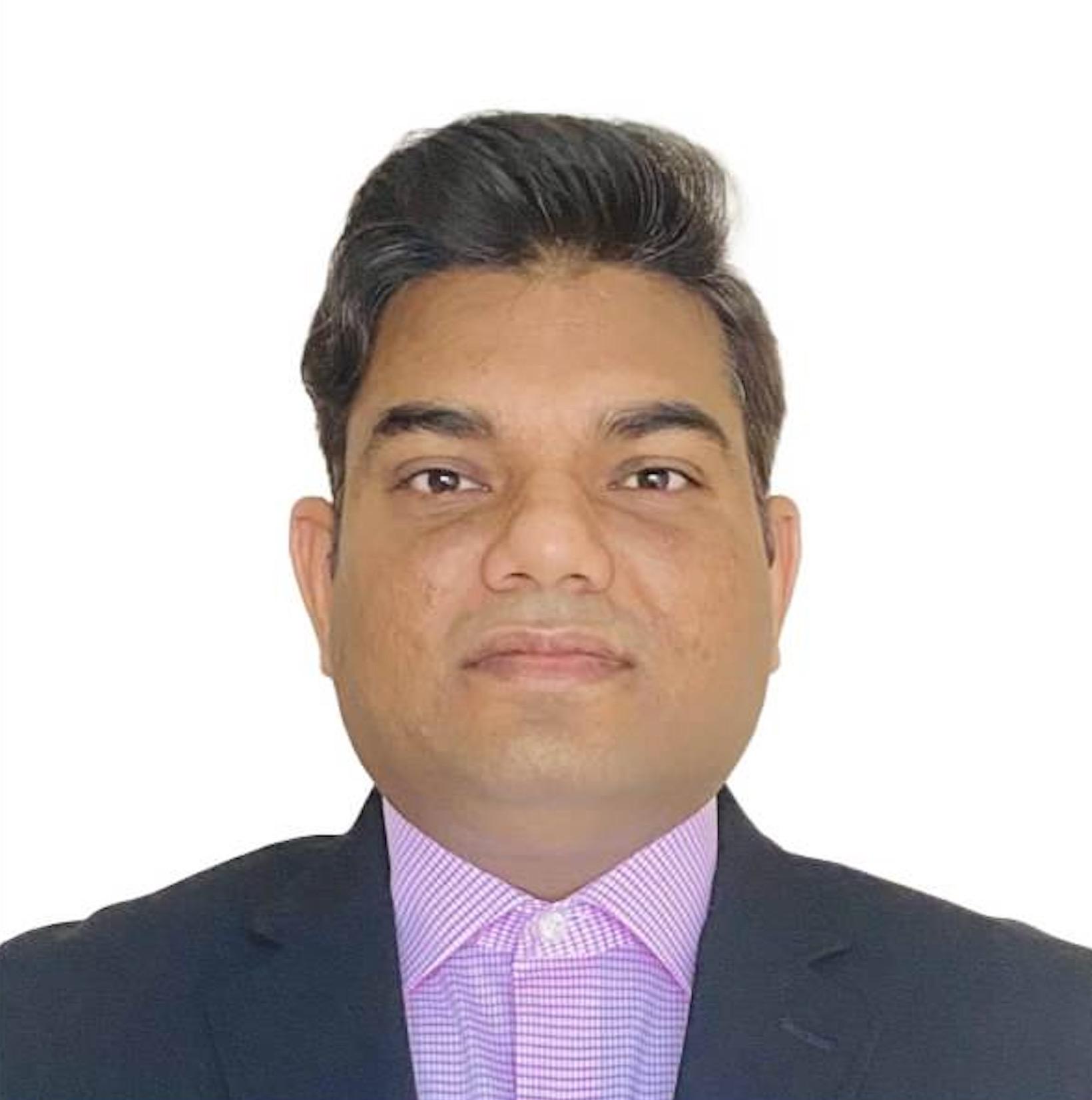 Chandra Sharma
Chandra Sharma
Chandra Sharma is a Technical Leader at Cisco Systems working as a Solution Specialist for several 5G projects involving design and deployment for Service providers, enterprises customers. Chandra has 14 years of mobile wireless experience in System Design, System Validation, Solution Architecture for 4G, 5G core network solutions using state-of-the-art technologies with proven track record of Technical leadership. Chandra is also a Certified Openstack and Kubernetes administrator and is well versed with virtualization technologies.
TUT-7, Private 5G Deployment Strategies & Use-Cases
Session chair: Alireza Ghasempour
Abstract: Historically mobile networks are deployed majorly by service providers or telecom operators. With 5G architecture evolving, we will soon witness the rise of private networks. A Private (non-public) network is deployed for dedicated use by a single enterprise or organization and usually serves a smaller area or at times a single location. Private 5G networks will be deployed by or for such enterprise would serve locations as in university campuses, Hospitals, manufacturing facilities, defence bases, airports, stadiums, logistic fulfilment centers and other places with critical infrastructure or mission-critical applications. In this tutorial, we intend to explain in detail the Private5G concept and present some of the deployment methods for Private 5G use cases. Also, we will discuss the synergies between private5G and Wifi6 and how they will co-exist in an enterprise network environment. Further, we will explain some of the industrial use cases for Private 5G, the Design approach for these use cases, Pro’s and cons for these approaches and share our practical experience and learnings.
Short Biography of the Speakers:
 Rajaneesh Suhakar Shetty
Rajaneesh Suhakar Shetty
Rajaneesh Suhakar Shetty is a Principal Architect at Cisco working as a Service provider Solution Specialist for many 5G Designs/deployments projects for large customer across regions. Rajaneesh has 20+ years of telecom industry experience with proven credentials as Trusted Advisory with expertise in Customer delivery, Software Management, System Architecture, Test Architecture, Product Management and Pre-sales for 4G, 5G, VoLTE, RAN and other Telecom solutions using state-of-the-art technologies with excellent track record of Technical leadership & management. Rajaneesh holds several patents in mobile technologies and is an author of a published book – “5G Mobile Core Network: Design, Deployment, Automation”, and “4G: Deployment Strategies and Operational Implications”.
 Vivek Agarwal
Vivek Agarwal
Vivek Agarwal is a Senior Technical leader at Cisco and leads Cisco’s 5G service and technology transformation group . Vivek has 15+ year industry experience working with Tier1 mobile operators globally . Vivek’s expertise includes large scale deployment of 4G, 5G, VNF infrastructure, VoWiFi, VoLTE. Vivek holds special expertise in deployment for network functional virtualization infrastructure deployment for large scale datacenter customers globally . Vivek holds several patents in mobile technologies and NFV space . Vivek is industry speaker on different technologies at MWC ,Cisco live etc.
 Chandra Sharma
Chandra Sharma
Chandra Sharma is a Technical Leader at Cisco Systems working as a Solution Specialist for several 5G projects involving design and deployment for Service providers, enterprises customers. Chandra has 14 years of mobile wireless experience in System Design, System Validation, Solution Architecture for 4G, 5G core network solutions using state-of-the-art technologies with proven track record of Technical leadership. Chandra is also a Certified Openstack and Kubernetes administrator and is well versed with virtualization technologies.
TUT-8, 6G Security and Privacy Vision Towards Reality
Session chair: Amruthur Narasimhan
Abstract: Although the fifth-generation wireless networks are yet to be fully investigated, the visionaries of the 6th generation (6G) ecosystem have already come into the discussion. Therefore in order to consolidate and solidify the security and privacy in 6G networks, this tutorial will present how the security may impact on the envisioned 6G wireless systems with the possible challenges and the potential solutions. This tutorial will provide our vision on 6G security with the tentative threat landscape based on the foreseen 6G network architecture. We discuss the security and privacy challenges that may encounter with the available 6G requirements and potential 6G use cases. In particular, the tutorial will discuss the security considerations associated with 6G enabling technologies such as distributed ledger technology (DLT), physical layer security, distributed AI/ML, visible light communication (VLC), THz, and quantum communication. The tutorial will also provide some insights into the standardization efforts and research-level projects relevant to 6G security. To sum up, this tutorial will aim to provide enlightening guidance for subsequent research of 6G security and privacy at this initial phase of vision towards reality.
Short Biography of the Speaker:
 Dr. Madhusanka Liyanage
Dr. Madhusanka Liyanage
Dr. Madhusanka Liyanage received his B.Sc. degree (First Class Honours) in electronics and telecommunication engineering from the University of Moratuwa, Moratuwa, Sri Lanka, in 2009, the M.Eng. degree from the Asian Institute of Technology, Bangkok, Thailand, in 2011, the M.Sc. degree from the University of Nice Sophia Antipolis, Nice, France, in 2011, and the Doctor of Technology degree in communication engineering from the University of Oulu, Oulu, Finland, in 2016. From 2011 to 2012, he worked as a Research Scientist at the I3S Laboratory and Inria, Sophia Antipolis, France. He is currently an assistant professor/Ad Astra Fellow at the School of Computer Science, University College Dublin, Ireland. He is also acting as an adjunct Processor at the Center for Wireless Communications, University of Oulu, Finland. He was also a recipient of the prestigious Marie Skłodowska-Curie Actions Individual Fellowship during 2018-2020. During 2015-2018, he has been a Visiting Research Fellow at the CSIRO, Australia, the Infolabs21, Lancaster University, U.K., Computer Science and Engineering, The University of New South Wales, Australia, School of IT, University of Sydney, Australia, LIP6, Sorbonne University, France and Computer Science and Engineering, The University of Oxford, U.K. He is also a senior member of IEEE. In 2020, he received the “2020 IEEE ComSoc Outstanding Young Researcher” award by IEEE ComSoc EMEA. Dr. Liyanage’s research interests are 5G/6G, SDN, IoT, Blockchain, MEC, mobile, and virtual network security.
More info: www.madhusanka.com
TUT-9, Achieving Global Connectivity Using Aerial and Space Networks
Session chair: Christopher UDEAGHA
Abstract: The United Nations (UN) has defined a set of sustainable development goals (SDGs) targeted for 2030 that include ending poverty, hunger, and inequalities, establishing high quality of education and medical services, to name a few. Achieving such goals requires advancement in many industries, which includes the internet and communication technology (ICT) sector. In particular, establishing high quality internet service provides opportunities to stimulate economy in poor communities, access to remote learning, access to digital records and remote patient monitoring, and help farmers improve productivity. In this context, and as the standardization of the fifth generation (5G) of wireless communication systems (WCSs) has been completed, and 5G networks are in their early stage of deployment, the research visioning and planning of the sixth generation (6G) of WCSs are being initiated. However, it is well-known that urbanized regions have been the major beneficiaries of the advances in the previous generations of WCSs. Hence, it is important to carry research with the focus on ensuring digital inclusion of rural and remote areas, which currently lack stable access to internet connectivity. In this talk, we focus on (i) possible network architectures to establish backhaul connectivity in rural and remote areas, with emphasis on satellite-based solutions, (ii) current challenges facing internet access in rural areas, (iii) possible solutions to enhance internet access in rural areas, with emphasis on drone-based architectures, and (iv) existing solutions to improve the flight duration of drones and ensure stable coverage in rural areas.
Short Biography of the Speakers:
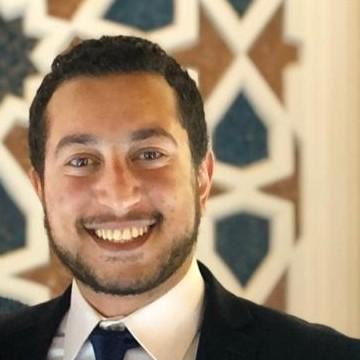 Dr. Mustafa A. Kishk
Dr. Mustafa A. Kishk
Dr. Mustafa A. Kishk received the B.Sc. and M.Sc. degrees from Cairo University, Giza, Egypt, in 2013 and 2015, respectively, and the Ph.D. degree from Virginia Tech, Blacksburg, VA, USA, in 2018. He is a Postdoctoral Research Fellow with the Communication Theory Laboratory, King Abdullah University of Science and Technology, Thuwal, Saudi Arabia. His current research interests include stochastic geometry, energy harvesting wireless networks, UAV-enabled communication systems, and satellite communications.
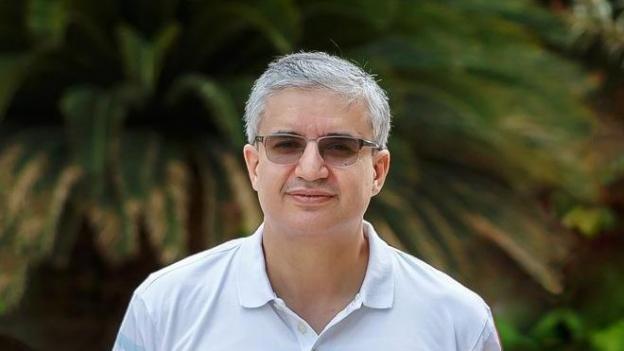 Professor Mohamed-Slim Alouini
Professor Mohamed-Slim Alouini
Professor Mohamed-Slim Alouini was born in Tunis, Tunisia. He received the Ph.D. degree in Electrical Engineering from the California Institute of Technology (Caltech) in 1998. He served as a faculty member at the University of Minnesota then in the Texas A&M University at Qatar before joining in 2009 the King Abdullah University of Science and Technology (KAUST) where he is now a Distinguished Professor of Electrical and Computer Engineering. Prof. Alouini is a Fellow of the IEEE and of the OSA. He is currently particularly interested in addressing the technical challenges associated with the uneven distribution, access to, and use of information and communication technologies in far-flung, rural, low-density populations, low-income, and/or hard-to-reach areas.
TUT-10, R & D in 5G with NetSim
Session chair: Reana Salmon
Abstract: Researchers lack the requisite tools for simulating end-to-end 5G networks. There are a few ‘Link-level’ simulators that enable users to model a single link between the UE and the gNB. These can’t be used for end-to-end modeling of the network, from the UE to the host-server. Even more problematically, they do not allow for modeling of the entire TCP/IP protocol stack.
This tutorial is an in-depth exploration of NetSim, an end-to-end, full-stack, packet-level simulator. We cover (i) its easy-to-use GUI with simple drag and drop functionality (ii) the results dashboard and output files for metrics such as throughput, latency, error, etc., and (iii) the 5G Protocol source C code that is provided along with, which can be modified by researchers to write their own algorithms/protocols.
Short Biography of the Speaker:
 Pranav Viswanathan
Pranav Viswanathan
Pranav Viswanathan is part of the founding team of NetSim (2005) and currently handles Sales & Marketing, Product Management and Support. In the early years of NetSim, he wrote the Discrete Event Simulation (DES) framework for NetSim including the simulation kernel and metrics engine. He continues to be closely involved with NetSim development especially the verification of simulation correctness. He has a penchant for interacting with customers, appreciating their requirements, and answering needs with software.
He has authored a variety of papers, book chapters, tech articles and has given numerous talks, tutorials and seminars in the area of modelling and simulation of communication networks. Pranav received his B-Tech from IIT Madras (’03)
TUT-11, Shaping Future 6G Core Networks – Understanding Evolution Trends from 5G to 6G
Session chair: Christopher UDEAGHA
Abstract: As the sixth generation of mobile communications (6G) is targeted for global deployment in 2030 and research on 6G has just been globally kicked off in parallel to the ongoing 5G evolution, the definition of 6G is currently the subject of many national research programs around the globe. This tutorial will motivate 6G research and provide an holistic overview of what 6G might look like based outlining potential new 6G services and network deployment visions as well as looking at current technology drivers for the evolution of 5G, such as Open RAN, Non-Terrestrial Networks (NTNs), campus and Non-Public Networks (NPNs) and AI/ML-based network control and management, and new disruptive technologies, such as communications in THz frequencies and quantum computing. A major focal point will be on the design of a flexible organic 6G core to glue together the different access and backhaul networking technologies for supporting the many divergent 6G application domains including the new mobile and nomadic deployments and global distributed local networks. In the last part the tutorial will motivate the need for open 6G-ready research testbeds and outline the evolution roadmap of the Fraunhofer FOKUS Open5GCore software toolkit to enable these. More information can also be found at www.6G-ready.org on use cases and technology directions to be presented.
Short Biography of the Speakers:
 Thomas Magedanz (PhD)
Thomas Magedanz (PhD)
Thomas Magedanz (PhD) has been professor at the Technische Universität Berlin, Germany, leading the chair for next generation networks (www.av.tu-berlin.de) since 2004. In addition, since 2003 he has been Director of the Business Unit Software-based Networks (NGNI) at the Fraunhofer Institute for Open Communication Systems FOKUS (www.fokus.fraunhofer.de/go/ngni) in Berlin. For 33 years Prof. Magedanz has been a globally recognized ICT expert and coach, developing open software toolkits and technology testbeds for emerging mobile network generations. His current research is targeting the 5G evolution towards 6G. He recently co-edited the book “Shaping Future 6G Networks – Needs, Impacts, and Technologies” which will appear at IEEE/Wiley in Autumn 2021.
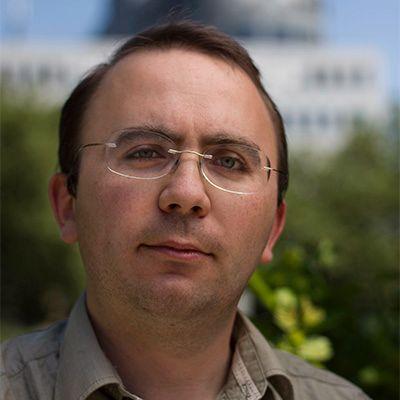 Marius Corici (Dr. Eng.)
Marius Corici (Dr. Eng.)
Marius Corici (Dr. Eng.) is a senior researcher at the Fraunhofer FOKUS Institute and deputy-head of the Software-based Networks (NGNI) department of Fraunhofer FOKUS Institute. He has received his Doctoral Degree in 2013 on Self-Adaptable IP Control in Carrier Grade Mobile Operator Networks. Currently he is leading the research and development teams for the Open5GCore (www.open5gcore.org) and NEMI (www.nemi-project.org) toolkits and acting as a research pathfinder for novel features beyond-5G and 6G architectures. Furthermore, Marius Corici is acting as researcher at the Technische Universität Berlin and preparing the lectures on 5G as part of the department next generation networks (Architekturen der Vermittlungsknoten – AV) ((www.av.tu-berlin.de).
TUT-12, Evolution of NOMA Toward Next Generation Multiple Access
Session chair: Amruthur Narasimhan
Abstract: User data traffic, especially a large amount of video traffic and small-size internet-of-things packets, has dramatically increased in recent years. It is hence crucial to increase network capacity and user access to accommodate these bandwidth consuming applications and enhance the massive connectivity. As a prominent member of the next generation multiple access (NGMA) family, non-orthogonal multiple access (NOMA) has been recognized as a promising multiple access candidate for the sixth generation (6G) networks. The main contents of this tutorial are to discuss the so-called “One Basic Principle plus Four New” concept. Starting with the basic NOMA principle to explore the possible multiple access techniques in a non-orthogonal manner, the advantages and drawbacks of both the channel state information based successive interference cancellation (SIC) and quality-of-service based SIC are discussed. Then, the application of NOMA to meet the new 6G performance requirements, especially for massive connectivity, is explored. Furthermore, the integration of NOMA with new physical layer techniques is considered, followed by introducing new application scenarios for NOMA towards 6G. Finally, the application of machine learning in NOMA networks is investigated, ushering in the machine learning empowered NGMA era, for making multiple access intelligently for the next-generation networks.
Short Biography of the Speakers:
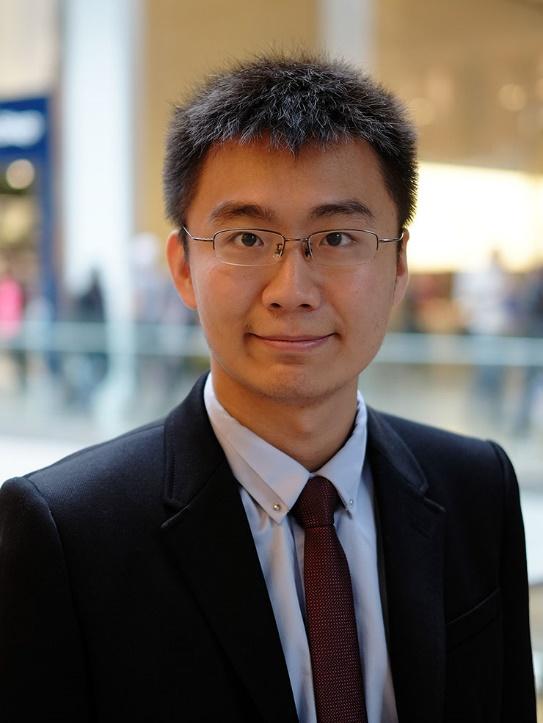 Yuanwei Liu
Yuanwei Liu
Yuanwei Liu (http://www.eecs.qmul.ac.uk/~yuanwei/) is a Senior Lecturer (Associate Professor) at Queen Mary University of London (QMUL) since Aug. 2021, where he was a Lecturer (Assistant Professor) from 2017 to 2021 and received the PhD degree in 2016. He was a Postdoctoral Research Fellow at King’s College London (KCL) (Sep. 2016- Aug. 2017). His research interests are NOMA, RIS, UAV communications, and machine learning. He has over 200 refereed publications attributed, including 120+ IEEE journal papers, 4 book/book Chapters. He has over 13 ESI highly cited papers and 17 IEEE ComSoc Best Readings papers. He received over 8800 citations in Google Scholar with an h-index is 41. He received IEEE ComSoc Outstanding Young Researcher Award for EMEA in 2020. He is the recipient of the 2020 Early Achievement Award of the IEEE ComSoc – Signal Processing and Computing for Communications (SPCC) Technical Committee. He is listed among the World’s Top 2% Scientists by Stanford University.
He is the Senior Editor of IEEE COMMUNICATIONS LETTERS, Editor of the IEEE TRANSACTIONS ON Wireless COMMUNICATIONS and the IEEE TRANSACTIONS ON COMMUNICATIONS. He serves as the leading Guest Editor for IEEE JSAC special issue on Next Generation Multiple Access, a Guest Editor for IEEE JSTSP special issue on Signal Processing Advances for Non-Orthogonal Multiple Access in Next Generation Wireless Networks. He has served as a TPC Member for many IEEE conferences, such as GLOBECOM and ICC. He received the Exemplary Reviewer Certificate of IEEE WIRELESS COMMUNICATIONS LETTERS in 2015, IEEE TRANSACTIONS ON COMMUNICATIONS in 2016 and 2017, and IEEE TRANSACTIONS ON WIRELESS COMMUNICATIONS in 2017 and 2018. He has served as the Publicity Co-Chair for VTC 2019-Fall. He is the leading contributor for “Best Readings for Non-Orthogonal Multiple Access (NOMA)” and the primary contributor for “Best Readings for Reconfigurable Intelligent Surfaces (RIS)”. He serves as the chair of Special Interest Group (SIG) in Signal Processing and Computing for Communications (SPCC) Technical Committee on the topic of signal processing Techniques for next generation multiple access (NGMA), the vice-chair of SIG Wireless Communications Technical Committee (WTC) on the topic of Reconfigurable Intelligent Surfaces for Smart Radio Environments (RISE), and the Tutorials and Invited Presentations Officer for Reconfigurable Intelligent Surfaces Emerging Technology Initiative.
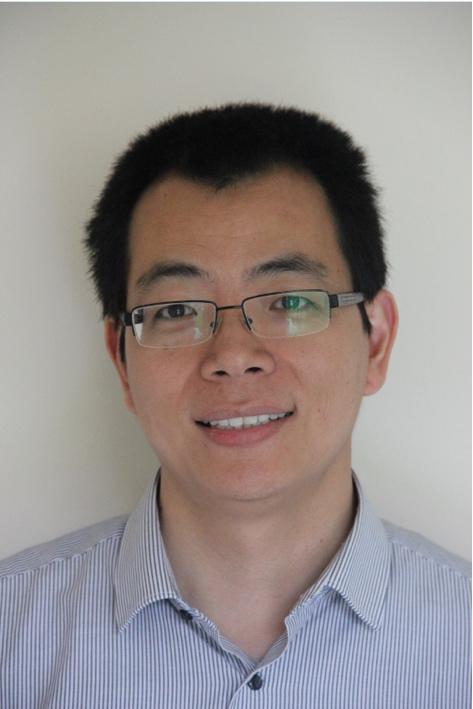 Zhiguo Ding
Zhiguo Ding
Zhiguo Ding received his B.Eng in Electrical Engineering from the Beijing University of Posts and Telecommunications in 2000, and the Ph.D degree in Electrical Engineering from Imperial College London in 2005. From Jul. 2005 to Apr. 2018, he was working in Queen’s University Belfast, Imperial College, Newcastle University and Lancaster University. Since Apr. 2018, he has been with the University of Manchester as a Professor in Communications. From Sept. 2012 to Sept. 2022, he has also been an academic visitor in Princeton University.
Dr Ding’ research interests are 5G networks, game theory, cooperative and energy harvesting networks and statistical signal processing. He has been serving as an Editor for IEEE Transactions on Communications, IEEE Transactions on Vehicular Networks, and Journal of Wireless Communications and Mobile Computing, and served as an editor for IEEE Wireless Communication Letters and IEEE Communication Letters. He was the TPC Co-Chair for the 6th IET International Conference on Wireless, Mobile & Multimedia Networks (ICWMMN2015), Symposium Chair for International Conference on Computing, Networking and Communications. (ICNC 2016), and the 25th Wireless and Optical Communication Conference (WOCC), and Co-Chair of WCNC-2013 Workshop on New Advances for Physical Layer Network Coding. He received the best paper award in IET Comm. Conf. on Wireless, Mobile and Computing, 2009 and the 2015 International Conference on Wireless Communications and Signal Processing (WCSP 2015), IEEE Communication Letter Exemplary Reviewer 2012, the EU Marie Curie Fellowship 2012-2014, IEEE TVT Top Editor 2017, 2018 IEEE Communication Society Heinrich Hertz Award, 2018 IEEE Vehicular Technology Society Jack Neubauer Memorial Award, 2018 IEEE Signal Processing Society Best Signal Processing Letter Award, and Alexander von Humboldt Foundation Friedrich Wilhelm Bessel Research Award 2020. He is a member of the Global Research Advisory Board of Yonsei University, a Web of Science Highly Cited Researcher in two disciplines (2019&2020), an IEEE ComSoc Distinguished Lecturer, and a Fellow of the IEEE.
TUT-13, 5G Inclusive Unified Digital Infrastructure Architecture – Imperatives, Rationale, Approach and Challenges
Session chair: Christopher UDEAGHA
Abstract: Many application domains have started looking at 5G and 5G-like technologies to leverage the new features and facilities provided by the networks like ultra-high speeds, ultra-low latency, connecting massive number of devices which need on and off connectivity, and other such requirements. Smart Cities are considered as one of the high priority Application domains for 5G. The operation of Smart Cities relies enormously on IoT, and 5G wireless networks are expected to be the great IoT enabler. By offering faster connections, more reliability and higher capacity at lower costs, 5G is a critical piece of the smart city puzzle, allowing cities to access the necessary fast connections to their infrastructure, devices, and people. 5G offers the capacity to enable additional smart city capabilities and applications that require high-bandwidth and low-latency. This tutorial is aimed at providing a comprehensive insight and understanding of Digital Transformation of the Infrastructure, be it civic, utility, or critical infrastructure. The tutorial shall illustrate the systemic digital transformation methodology of the Infrastructure for providing economically viable implementations for diverse unique requirements leveraging common Architectural principles and a well curated combination of standardized components and customized components. Further, it shall provide vital insights into the Imperatives, Rationale, Approach and Challenges in deploying 5G inclusive Unified Digital Infrastructure whether it is green field or Brown field deployments.
Short Biography of the Speaker:
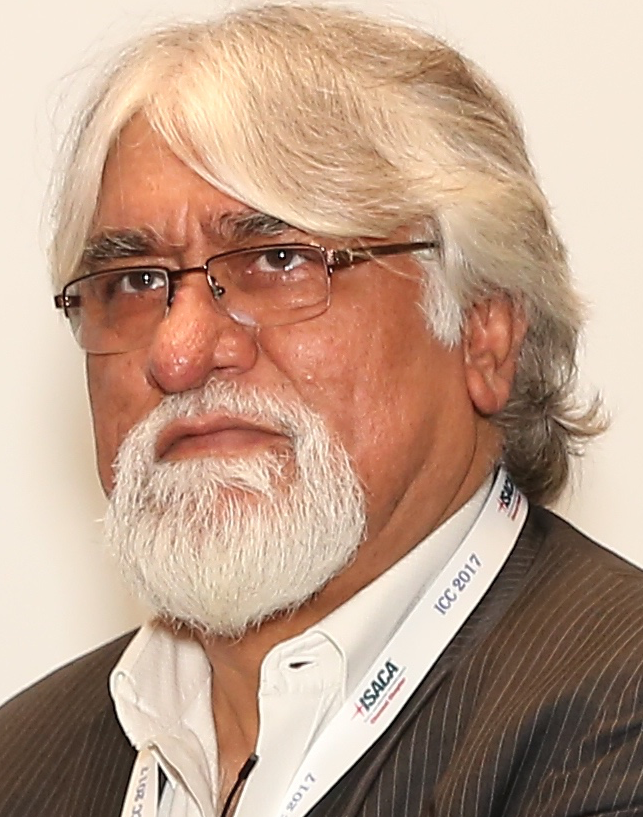 Kishor
Kishor
Kishor is Technology Consultant, Mentor & Design Architect in Electrical, Electronics & ICT with over 40 years of professional experience in education, research, design and consulting. Over 30 years of hardcore Research and Design Development Experience in Solutions, Systems, Products, Hardware, Software & Firmware (Embedded Software) in fields of Industrial, Power, IT, Telecom, Medical, Energy and Environment, and over 10 years of Consultancy Experience to different segments of business & industry. He has over 250 Research & Design Mentees in the Electronics, ICT & STI Ecosystems. Professionally, he is an Electronics Design Engineer practicing design & development of a wide spectrum of Products, Systems & Solutions as an Independent Design House – NARNIX since 1981.
For last 10 years, deeply involved in Standardization in the Electrical, Electronics, Communication and Information Technology Domains with focus on Identifying Gaps in Standards to address Interoperable Systems & Solutions Deployments and bring Harmonization by defining standardized interfaces to ensure End-to-End Interoperability. Currently leading the Standardization activities as the founding Chairman of Smart Infrastructure Sectional Committee LITD 28 in BIS the Indian National Standards Body, Vice Chair – Strategy in IEC Systems Committee on Smart Cities, Project Leader – IEC TS 63188 ED1 – Smart Cities Reference Architecture Methodology, Project Leader – IEC 63205 ED1 – Smart Cities Reference Architecture, Chair, Advancing Research WG & Member Steering Committee – OCEANIS (The Open Community for Ethics in Autonomous and Intelligent Systems) & Co-Editor – ISO 30145 on Smart City ICT Reference Frameworks… He is the Standards Column Editor in IEEE IoT Magazine.
Currently, Kishor is developing a Comprehensive “5G inclusive ICT Architecture & Cyber Security Reference Architecture for Critical Infrastructure” and the 5G Application Layer Standards development in India. Globally, he is leading TRUSTWORTHINESS Reference Architecture in ISO/IEC JTC1.
TUT-14, 5G & Beyond: Addressing the Energy Challenge
Session chair: ajay McPherson
Abstract: The advent of 5G has received a lot of hype in the news with the initial deployment of the next-generation broadband network; yet, it is quite disconcerting to realize that much of the “promise” of 5G assumes the energy infrastructure exists to power all these new capabilities. Even more challenging: many use cases assume that the network can be fully utilized, while neglecting bottlenecks that depend on energy constraints rather than data throughput; thus, the payback estimates underpinning these massive investments may be substantially flawed.
The “5G Energy Gap” is a risk to the entire deployment and the benefits that can be derived. New methods for analyzing the system’s constraints and bottlenecks are presented through the concepts of the Power Value Chain, Power Cost Factor, 5G Derate Factor, and other technical/business and even socioeconomic factors.
This entry/intermediate-level tutorial introduces these concepts in a simple, yet realistic way and provides insight on how to address the complexity of the network so that all stakeholders can gain visibility on its energy footprint and translate the unique inputs/requirements of each part into the normalized, “universal currency” of energy. This approach allows performing static and dynamic analyses to achieve energy efficient optimization, and thus technical and business viability.
Short Biography of the Speaker:
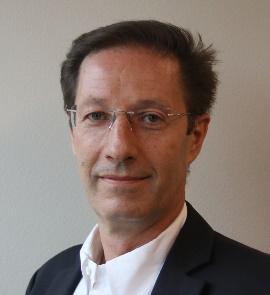 Francesco Carobolante
Francesco Carobolante
Francesco Carobolante is a Sr. Member of the IEEE, Member of the Steering and Technical Committees for several IEEE PELS and PSMA initiatives (including PwrSoC, PwrPack and EnerHarv), Co-chair of the IEEE INGR Energy Efficiency Working Group, Member of IEEE HIR, and is Principal at IoTissimo, where he helps global organizations and young companies develop technology and business strategies to compete in today’s fast-changing high-tech world.
His 10-years’ experience as Vice President Engineering at Qualcomm, combined with many years in senior leadership roles for major technology firms and start-ups, enabled him to develop leading edge products for Mobile, Computing, Audio and Communication. He created many industry “firsts,” among which the Magnetic Resonance Wireless Power Transfer that received Best of Innovation Award Honoree at 2015 Consumer Electronic Show.
He authored over 90 US patents, and has been invited keynote speaker and expert panelist at several premier international conferences. He received Master of Science in Electrical Engineering (MSEE) degrees from both University of Padova, Italy and University of California, Los Angeles.
TUT-15, Evolution of Direct RF Sampling Technology – Recent Advances, Challenges, and the Road Ahead
Session chair: Christopher Udeagha
Abstract: Traditional radio receivers including the latest cellular devices typically contain radio frequency (RF) front-ends employing super heterodyning that essentially dissociate the analog domain RF signal processing from the baseband signal processing pursued in the digital domain. The intermediate frequency (IF) based analog implementation of super heterodyne RF front-ends has ruled the radio world for almost three decades. But the recent advances in CMOS technology are gradually pushing a paradigm shift, with majority of RF signal processing moving into the digital domain. Direct RF sampling at receiver and its counterpart direct RF synthesis at transmitter bring a host of advantages and benefits in terms of radio design, but they also encounter a multitude of challenges. In this tutorial, we are going to study the pros and cons of various RF front-end architectures, including the direct conversion, super heterodyne with analog IF, super heterodyne with digital IF, and direct RF sampling/synthesis based alternatives. We are going to examine at least two case studies to further explain the design intricacies in RF front-end design. The second part of the tutorial will focus on the challenges specific to direct RF sampling and direct RF synthesis architecture. We will consider examples of practical transceivers built around direct RF sampling technology, and explain how they address those challenges. Finally, we will learn about the road ahead and will try to predict together the future of direct RF sampling technology.
Short Biography of the Speaker:
 M. Danish Nisar
M. Danish Nisar
M. Danish Nisar (S’05-M’09-SM’20) was born in Karachi, Pakistan in 1982. He completed his bachelors in electrical engineering from the National University of Science and Technology (NUST), Pakistan in 2004, and his Masters and PhD in communication engineering from the Technical University Munich (TUM), Germany respectively in 2006 and 2011, both with honors. In this duration he received scholarships from DAAD and Nokia Siemens Networks, Germany. From 2010 to 2012, he worked at Nomor Research GmbH, as Senior Research Engineer working on EU funded research projects including ARTIST4G, and from 2012 till 2015 at Intel in the Mobile Communications Group as 4G Physical Layer Algorithms Lead. Since 2015, he has been serving as Associate Professor in the electrical and computer engineering department at Center for Advanced Studies in Engineering (CASE). Dr. Nisar has been experimenting with various software defined radio (SDR) platforms over the past five years in his lab dealing with wireless communications and networks. He is currently the principal investigator of the project 5G-SDR: A Flexible Solution for Tactical Communications, funded by IGNITE, National Technology Fund, and Co-Principal Investigator for the Decentralized Communications sub-lab under the Swarm Robotics Lab, as part of the National Center for Robotics and Automation (NCRA) being funded by the Government of Pakistan. His research interests focus on wireless communications in particular in the domains of cellular and tactical communications, and signal processing for communications.
